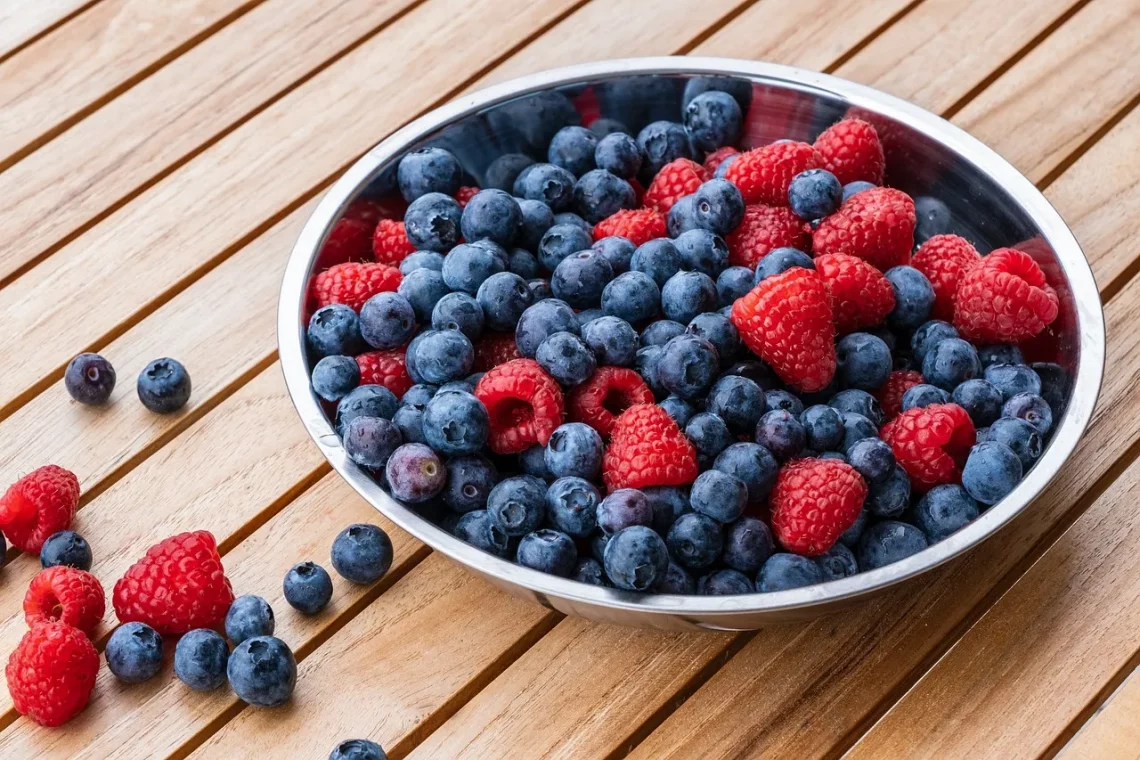
Do Guinea Pigs Eat Blueberries Safely and Healthily?
Guinea pigs are beloved pets known for their gentle nature and charming personalities. As small mammals, they require a balanced diet to thrive, which typically includes hay, pellets, and fresh vegetables. However, many guinea pig owners also wonder about the suitability of fruits in their pets’ diets. One such fruit that often comes to mind is the blueberry. These small, nutrient-rich berries are a favorite among many humans, but can they safely be included in a guinea pig’s diet?
Understanding the dietary needs of guinea pigs is crucial for their health and well-being. Unlike many other pets, guinea pigs cannot produce vitamin C on their own, making it vital for them to receive this essential nutrient through their food. Fruits, including blueberries, can provide not only vitamins but also a variety of other beneficial compounds. However, the question remains: Are blueberries a safe and healthy option for these adorable rodents?
In this article, we will explore the potential benefits and risks associated with feeding blueberries to guinea pigs, considering their unique dietary requirements and the importance of moderation.
Understanding the Nutritional Profile of Blueberries
Blueberries are often hailed as a superfood for humans, rich in antioxidants, vitamins, and minerals. For guinea pigs, these qualities can also prove beneficial, but it’s essential to delve deeper into their nutritional profile to understand how they fit into a guinea pig’s diet.
First and foremost, blueberries are an excellent source of vitamin C, which is vital for guinea pigs. Vitamin C helps in maintaining a healthy immune system, supporting skin health, and preventing scurvy, a disease that can occur due to a deficiency in this essential nutrient. A small serving of blueberries can help supplement a guinea pig’s vitamin C intake, especially if they are not getting enough from other sources.
In addition to vitamin C, blueberries contain dietary fiber, which is crucial for a guinea pig’s digestive health. Fiber aids in the proper functioning of the digestive system, helping to prevent issues such as obesity and gastrointestinal stasis. The fiber found in blueberries can contribute to a balanced diet when offered in moderation.
Moreover, blueberries are low in calories, making them an ideal treat for guinea pigs. They are also packed with antioxidants, which can help combat oxidative stress in the body. These antioxidants can play a role in reducing inflammation and supporting overall health. However, it is important to note that while blueberries offer several health benefits, they should not be the primary source of nutrition for guinea pigs.
In conclusion, while blueberries can provide valuable nutrients, they should only be given as an occasional treat rather than a staple in a guinea pig’s diet. The key is to maintain a well-rounded diet that includes hay, pellets, and an assortment of vegetables, with fruits like blueberries being a delightful addition from time to time.
How to Safely Introduce Blueberries to Your Guinea Pig’s Diet
Introducing new foods to a guinea pig’s diet should always be done with care, as their digestive systems can be sensitive. To safely incorporate blueberries, it’s essential to follow a few simple guidelines.
Start by selecting fresh, organic blueberries, as they are less likely to contain harmful pesticides or chemicals. Rinse the berries thoroughly under running water to remove any dirt or residues before offering them to your guinea pig. It’s best to offer only one blueberry at a time, especially during the initial introduction.
Observe your guinea pig for any signs of discomfort or digestive issues after eating the blueberry. Common signs of digestive upset include diarrhea or a decrease in appetite. If the guinea pig seems to tolerate the blueberry well, you can gradually increase the amount to a few berries a week. Remember, moderation is key; too many blueberries can lead to diarrhea or upset stomach due to their natural sugars.
It’s also important to consider the individual preferences of your guinea pig. Some may take to blueberries immediately, while others may be hesitant. If your guinea pig shows disinterest, do not force them to eat it. Instead, try offering it again after some time or mix it with other fruits or vegetables they enjoy.
In addition to fresh blueberries, you might consider offering them frozen blueberries as a refreshing treat during warmer months. However, be sure to thaw them before serving, as frozen fruits can be difficult for guinea pigs to eat.
Overall, introducing blueberries to your guinea pig’s diet can be a fun experience, but it requires careful consideration and observation. By following these guidelines, you can ensure that your furry friend enjoys this tasty treat without any adverse effects.
Potential Risks of Feeding Blueberries to Guinea Pigs
While blueberries can be a healthy treat for guinea pigs, it is crucial to be aware of the potential risks associated with feeding them to your pet. Understanding these risks can help ensure that your guinea pig remains healthy and happy.
One of the primary concerns when feeding blueberries is their sugar content. Although blueberries are lower in sugar compared to many other fruits, they still contain natural sugars that can contribute to weight gain and dental issues if fed in excess. Guinea pigs are prone to obesity, which can lead to various health problems, including heart disease and diabetes. Therefore, it’s essential to limit the frequency and quantity of blueberries in their diet.
Another risk associated with feeding blueberries is the possibility of gastrointestinal upset. Some guinea pigs may have sensitive digestive systems, making them more susceptible to diarrhea or bloating when introduced to new foods, including fruits. To minimize this risk, always introduce blueberries gradually and in small amounts, as previously discussed.
Additionally, it’s vital to monitor your guinea pig for any adverse reactions after feeding them blueberries. If you notice any signs of distress, such as lethargy, reduced appetite, or changes in stool consistency, it’s best to remove blueberries from their diet and consult a veterinarian.
Lastly, remember that blueberries should be offered as a treat and not as a replacement for their primary diet. A balanced diet is essential for the overall health of your guinea pig, and fruits should only make up a small portion of their food intake. Always prioritize hay, pellets, and vegetables to ensure they receive the necessary nutrients.
In summary, while blueberries can be a delightful and nutritious treat for guinea pigs, it is essential to be mindful of the potential risks. By following the guidelines for safe introduction and maintaining a balanced diet, you can help your guinea pig enjoy blueberries without compromising their health.
Alternative Fruits and Treats for Guinea Pigs
If you’re looking to diversify your guinea pig’s diet with other fruits and treats, there are plenty of options available that can be just as enjoyable and nutritious as blueberries. Providing a variety of treats can help keep your guinea pig engaged and excited about their meals.
One excellent alternative is strawberries. These fruits are also rich in vitamin C and provide a sweet, juicy treat that many guinea pigs love. Just like with blueberries, it’s best to introduce strawberries gradually and in moderation to avoid any digestive issues.
Another great option is bell peppers, which are not only safe for guinea pigs but are also an excellent source of vitamin C. They come in various colors, including red, yellow, and green, and can add some variety to your pet’s diet. Guinea pigs typically enjoy the crunchy texture of bell peppers, making them a popular choice among many pet owners.
You can also consider offering small amounts of carrot as a treat. While carrots are higher in sugar than other vegetables, they can be given occasionally for their sweetness and crunch. Just be sure to cut them into small pieces to prevent choking.
If you’re looking for something different, small amounts of melon, such as cantaloupe or watermelon, can also be a refreshing treat for guinea pigs. These fruits are hydrating and can be especially appealing during hot weather. Again, moderation is crucial to avoid any digestive upset.
In conclusion, blueberries are not the only fruit that can be safely introduced into a guinea pig’s diet. With a variety of options available, you can keep your pet’s diet interesting while ensuring they receive the necessary nutrients. Always remember to introduce any new treats gradually and observe your guinea pig for any adverse reactions.
**Disclaimer:** This article is for informational purposes only and does not constitute medical advice. If you have concerns about your guinea pig’s health or diet, please consult a veterinarian for professional guidance.




